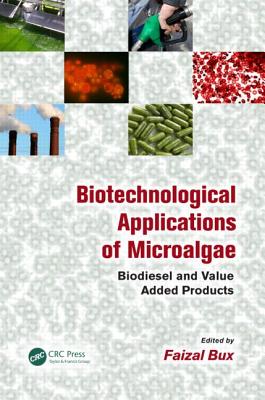This book presents the latest developments and recent research trends focusing on potential biotechnological applications of microalgae. It gives an analysis of microalgal biology, ecology, biotechnology, and biofuel production capacity as well as a thorough discussion on the value added products that can be generated from diverse microalgae. Chapters cover strain selection, growth characteristics, large-scale culturing, enumeration methods, and biomass harvesting and dewatering techniques. They also describe extraction, identification, and transesterification of microalgal lipids, and microalgae involvement in CO2 sequestration and phycoremediation.
Microalgae are an invaluable biomass source with potential uses that could lead to environmental and economic benefits for society. Biotechnological Applications of Microalgae: Biodiesel and Value Added Products presents the latest developments and recent research trends with a focus on potential biotechnologically related uses of microalgae. It gives an analysis of microalgal biology, ecology, biotechnology, and biofuel production capacity as well as a thorough discussion on the value added products that can be generated from diverse microalgae.
The book provides a detailed discussion of microalgal strain selection for biodiesel production, a key factor in successful microalgal cultivation and generation of desired biofuel products. It also describes microalagal enumeration methods, harvesting and dewatering techniques, and the design, and the pros and cons, of the two most common methods for cultivationopen raceway ponds and photobioreactors. Chapters cover lipid extraction and identification, chemical and biological methods for transesterification of microalgal lipids, and procedures involved in life cycle analysis of microalgae. They also examine the importance of microalgal cultivation for climate change abatement through CO2 sequestration and microalgae involvement in phycoremediation of domestic and industrial wastewaters.
The book concludes with a general discussion of microalgal biotechnology and its potential as a modern "green gold rush." The final chapter provides an overview of advanced techniques such as genetic engineering of microalgae to increase lipid yield. This book provides a one-stop benchmark reference on microalgal biotechnology, considering all aspects, from microalgal screening to production of biofuels and other value added products.
Get Biotechnological Applications of Microalgae by at the best price and quality guranteed only at Werezi Africa largest book ecommerce store. The book was published by Taylor & Francis Inc and it has pages. Enjoy Shopping Best Offers & Deals on books Online from Werezi - Receive at your doorstep - Fast Delivery - Secure mode of Payment
 Jacket, Women
Jacket, Women
 Woolend Jacket
Woolend Jacket
 Western denim
Western denim
 Mini Dresss
Mini Dresss
 Jacket, Women
Jacket, Women
 Woolend Jacket
Woolend Jacket
 Western denim
Western denim
 Mini Dresss
Mini Dresss
 Jacket, Women
Jacket, Women
 Woolend Jacket
Woolend Jacket
 Western denim
Western denim
 Mini Dresss
Mini Dresss
 Jacket, Women
Jacket, Women
 Woolend Jacket
Woolend Jacket
 Western denim
Western denim
 Mini Dresss
Mini Dresss
 Jacket, Women
Jacket, Women
 Woolend Jacket
Woolend Jacket
 Western denim
Western denim
 Mini Dresss
Mini Dresss






























































